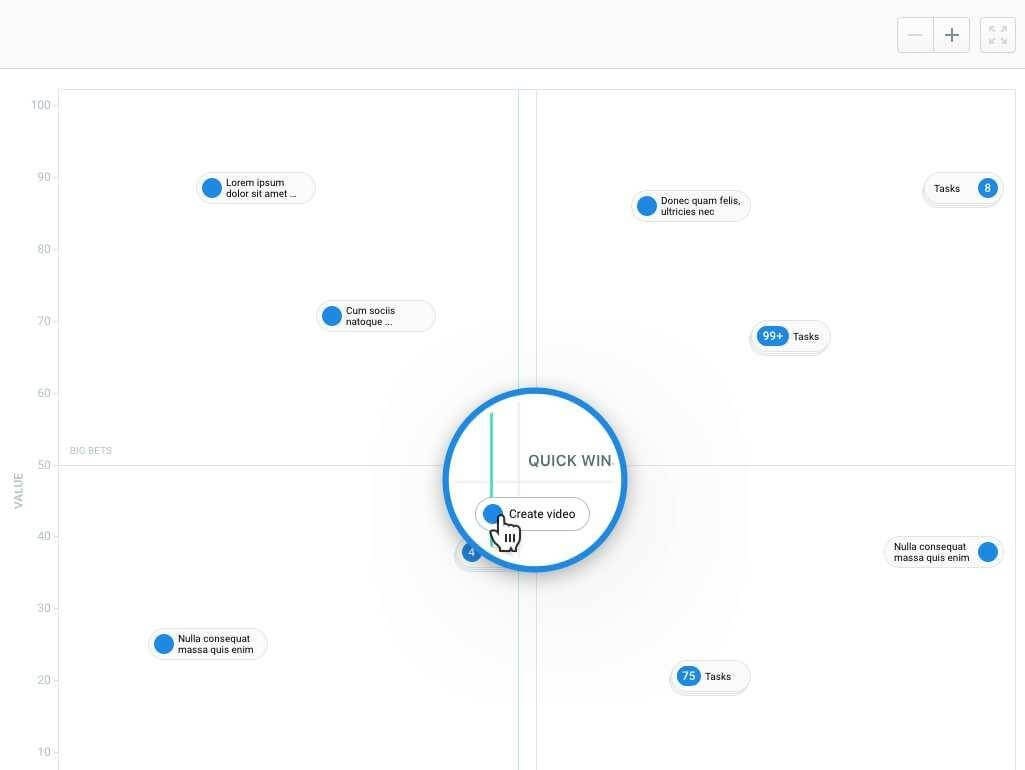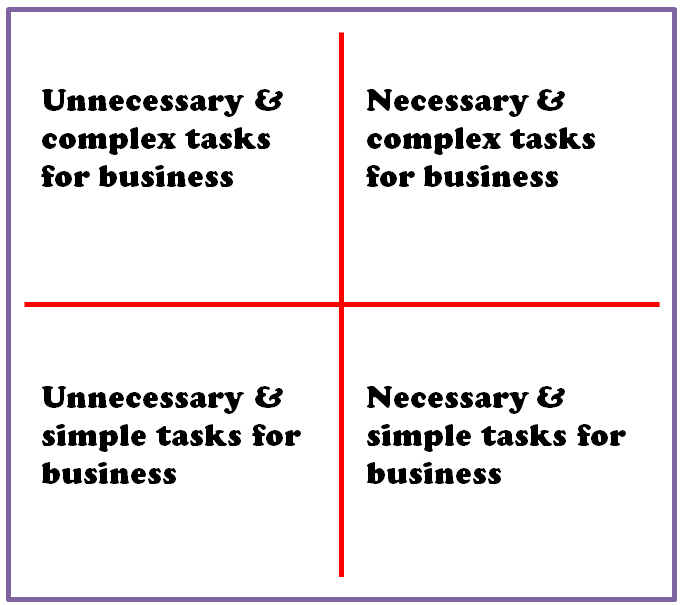4+ Types of Powerful Prioritization Matrix That Help to Score Your Product

Prioritization is an important element of successful business management, especially when specialists are not only guided by their own intuition but also use different techniques or so-called prioritization matrix patterns.
Our today’s article contains a clear description of such definition as prioritization matrix, its three absolutely interesting types with the examples of its successful personal use. It should be noted that this article would be useful for many project experts, including product managers, project managers, marketing specialists and others.
The Meaning of Prioritization Matrix
First of all, we would like to introduce the concept of a prioritization. Put it raw, it is a set of activities aimed at the correct distribution of work tasks in accordance with their immediate relevance for a particular stage of work. As a rule, the urgent or prime importance tasks should be executed in the first turn, and other tasks are expected to be done after the execution of first ones.
However, despite a quite simple explanation of this practice, it is rather hard sometimes for managers to realize the necessary order of the tasks implementation. Usually, prioritization occurs in such work processes as product development, project and release planning, and even daily to-do lists of different specialists. And in each process prioritization goes in its own way, creating new interesting project approaches to work.
A prioritization matrix is a special tool for task sorting that appears in the form of a table with some criteria of tasks value and exigence. All the criteria make up several groups of tasks to do, that, in their turn, receive an objective picture of which group of tasks should be executed primarily, which group has to be finished in the second place and which tasks do not have to be done at all.
Does it look quite easy? Maybe. So is it really simple in practice? Maybe, too. The prioritization matrix is not accepted as the decision for the entire work process, but it is a great instrument for the following work aspects:
- improvement of the structure and logic of the current project or product development
- meeting the terms of a product development by means of a strong time management culture
- implementation of the most significant amount of work with the most necessary efforts and minimal time and material expenses.
Prioritization matrix types and modes of use
As we mentioned earlier, prioritization matrix is one of the tools that help specialists with tasks ranking and systematization. Now we would like to concentrate on four different types of prioritization and their benefits for business.
Type 1: Eisenhower’s prioritizing matrix
This type is considered to be classic in the prioritization matrices system. This technique gets its name from thirty-fourth American president who knew how to prioritize things well. As usual, this matrix consists of four squares for the following :
- Square 1 contains the fundamentally important and the most urgent tasks and activities that should be finished as soon as possible.
- Square 2 presents a set of very important but not so urgent tasks. This part of the matrix is the essence of the entire work – based on this square, there is the main workflow for each specialist with his current duties and planned tasks.
- Square 3 is a set of urgent but not very important activities. This part may look like a bunch of distractions that should be considered carefully before their direct execution.
- Square 4 contains the tasks of the lowest priority both for their urgency and importance. Despite this visible irrelevancy, these tasks are certain parts of some more global processes and finally have to be done, too.
Many specialists respect this prioritization matrix for its simplicity and utilization flexibility, so it is actively used in product development, work planning, business strategy development and other high-level management processes.
Type 2: Value and Effort prioritization matrix
Such a simple structure matrix allows specialists to operate their tasks in a more comfortable way. It has a classic view of four squares, each of that determines the value of the group of tasks and the approximate amount of effort for the task execution. There is one function called Customer Backlog that images this matrix in Hygger, as follows:
There is how this prioritization matrix looks like in real life:
- Square 1 – Quick wins. This group of tasks is different by its high importance for the entire workflow, and the tasks do not actually require a lot of efforts.
- Square 2 – Big Bets. These tasks are quite valuable and can bring the company to the success, however they often need more efforts and time to be done.
- Square 3 – Maybes. Such tasks and activities are easy to be completed without many efforts but they hardly have a big importance for the business processes.
- Square 4 – Time Sinks. Such a to-do list contains the tasks with low priority with minimal efforts, so it is recommended not to pay attention to these tasks during the day.
Type 3: Value and Risk prioritization matrix
Let’s meet with one more interesting and easy-to-understand way of tasks prioritization – it is Value & Risk method. This matrix helps specialists divide the tasks into four categories by their value for the workflow and also realize the real risk of a particular activity. It should be noted that the value of each task is determined individually by specialists, but there are three different criteria for the risk scoring, as follows:
- Schedule risk means that the risk can be determined by the time the task starts
- Cost risk means a rather high amount of the task cost that exceeds the business possibilities
- Functionality risk means a lack of technological possibility to do the task.
Type 4: Value and Complexity prioritization matrix
Value & Complexity matrix of tasks prioritization gives specialists many interesting possibilities: there you can divide all your tasks into the groups by their direct business value and complexity to be executed. In the low level there are the tasks with their minimal priority and complexity, and, thus, the high sections of the matrix there are the tasks with their maximum value and the most complicated level of execution.
Such prioritization matrix makes up the clearest vision of what should be done in order to achieve the best results in business processes, or which tasks inhibit the company development and force the specialist to engage in the wrong things.
Prioritization methods that are visualized as matrices
We have already considered the most popular types of prioritization matrices and their interesting features. Now we would like to talk about some existing models of tasks prioritization that can be conveniently visualized in the form of the matrix.
-
MoSCoW prioritization model
Such a prioritization technique has an unusual name, given due to the specific statements that are the key parts of this system. Actually, the real name of this prioritization should consist of four letters, MSCW, but two additional ‘O’ give its name a certain zest and international charm. Let’s take a closer look at this method – it has four main groups for the tasks, as follows:
- M (Must have this) is a group of enforceable tasks that should be implemented immediately and are tend to be out of the question.
- S (Should have this if at all possible) is a set of tasks that are very important to be done but they actually do not have strict time frames. These tasks usually require a lot of efforts but nobody rushes the specialists to do it faster.
- C (Could have this if it does not affect anything else) contains the tasks that may be done in case of a full harmony in the technological and logical structure of the project. In other words, these tasks should allow flexible approaches to implement them, otherwise they will not be implemented at all.
- W (Will not have this time but would like in the future) presents a list of some tasks or ideas that would be good to be executed or implemented during the next stages of the current project or in other future projects at all. These tasks are supposed to be important but they should wait for their turn.
This prioritization method is perfect for project development, especially in cases of working with backlogs, release planning, creating the technology roadmaps and other different fields.
-
Diagram prioritization model
This simple and informative technique helps product managers and other specialists with the sorting and ordering of the assumed and features of the future product. The prioritizing process is made with the help of an ordinary diagram where the X-axis consists of the number of people that use a certain feature, and the Y-axis contains the frequency of use of a certain feature. Inside the diagram, there is a table with all the probable features of the product – and actually, that is all.
Listing such a table, it becomes easy to see which of the features promise their guaranteed success and demand among the users, and which features are not so necessary and desired. Then all the necessary features can be divided into different groups by their urgency, importance and the complexity of execution.
Thus, diagram prioritization gives the possibility to have a clear vision of what the next stages of product development are. It really makes the future product more essential and applicable.
Conclusion
To sum up, it is a good idea to devote time to learning some techniques that will allow you to save time for work in the future. Indeed, despite several working hours for every working day it is not always possible to spend them wisely and complete all the necessary tasks. The prioritization matrix you choose will help you feel your everyday routine tasks more accurately.
We truly believe that most of you, our constant readers, are great specialists in your professional expertise, so we would like to know your personal experience in using different prioritizing method for improving your work processes. Please, write to us about it in the article comments below or via our contact form for more private conversation. We appreciate your contribution in advance!





